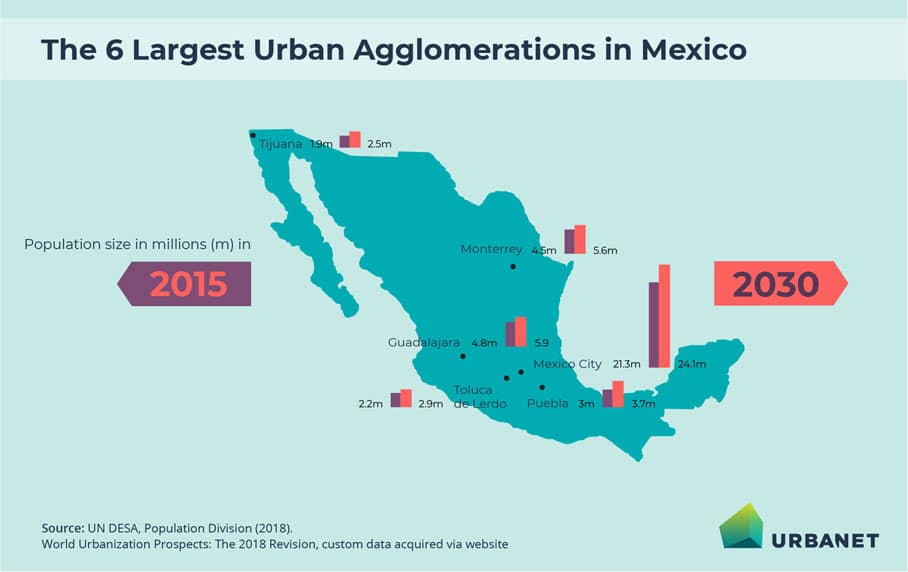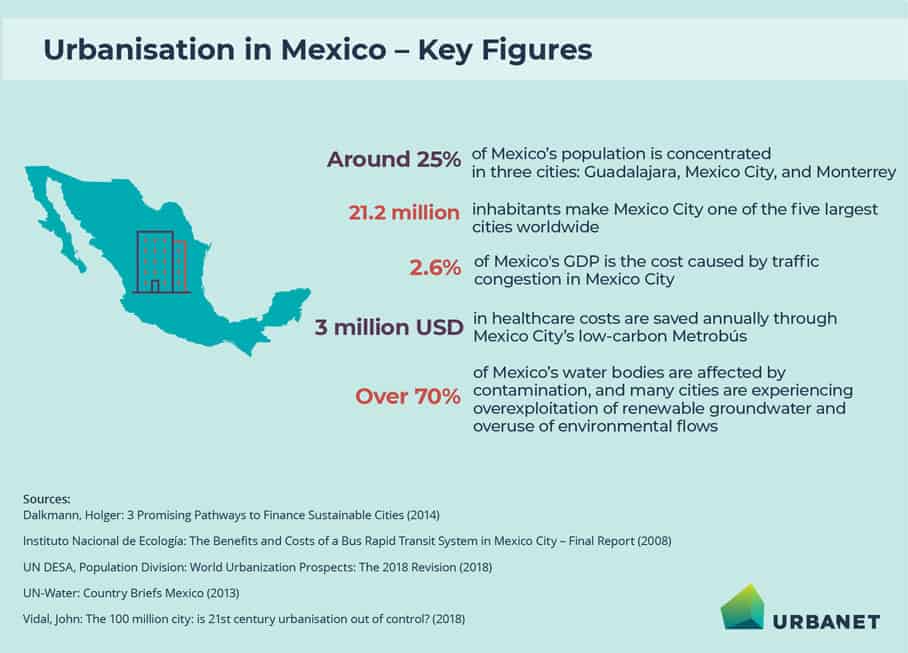Infographics: Urbanisation and Urban Development in Mexico
It is well-known that Mexico City counts among the five largest cities in the world. Yet, the history of urbanisation in the country has more interesting facts to offer. Learn more in URBANET’s latest series of infographics.
Urban and Rural Population
The graphic displays the rapid growth of Mexico’s urban population – by an impressive 100 per cent between 1980 and 2010[1]https://thecityfix.com/blog/perfect-storm-one-countrys-history-urban-sprawl-luis-zamorano/. Today, 80 per cent of all Mexicans live in urban areas[2]UNDESA World Urbanization Prospects 2018. In the meantime, the rural population has stagnated with only a slight increase in the past decades. Until 2050, the rural population is projected to decrease again, while the number of people living in cities will continue to rise.

Urbanisation in Mexico – Urban and Rural Population in Mexico | Mexico Infographics © GIZ
Size of Settlements
Mexico has a number of medium to large cities. 38 cities count between 300,000 and 1 million people, and 16 cities have a population of more than one million, with two of them being megacities of more than 5 million people. According to projections, the total number of cities (i.e. more than 15,000 inhabitants) will grow from 249 in 2010 to 747 in 2030[3]https://onuhabitat.org.mx/index.php/tendencias-del-desarrollo-urbano-en-mexico.

Urbanisation in Mexico – Size of Settlements in Mexico | Mexico Infographics © GIZ
The 6 Largest Cities
This graphic shows the population size of Mexico’s six largest cities in 2015 and 2030, respectively. With more than 20 million people, Mexico City is by far the largest urban agglomeration in the country.

Urbanisation in Mexico – Largest Cities in Mexico | Mexico Infographics © GIZ
Urbanisation in Mexico – Key Figures
A quarter of Mexico’s population lives in the country’s three largest cities: Mexico City, Guadalajara, and Monterrey. In fact, the population size of Mexico City – more than 21 million – outnumbers that of many countries, such as Chile (18.7 million), Guatemala (17.2 million), and the Netherlands (17 million). Traffic is a big issue in Mexico City: congestion is estimated to cause costs amounting to 2.6 per cent of the country’s GDP, and the city’s low-carbon metrobus is estimated to save 3 million US dollar in healthcare cost. More than 70 per cent of Mexico’s water bodies are contaminated, with many cities overexploiting groundwater supplies.

Urbanisation in Mexico – Key Figures | Mexico Infographics © GIZ
